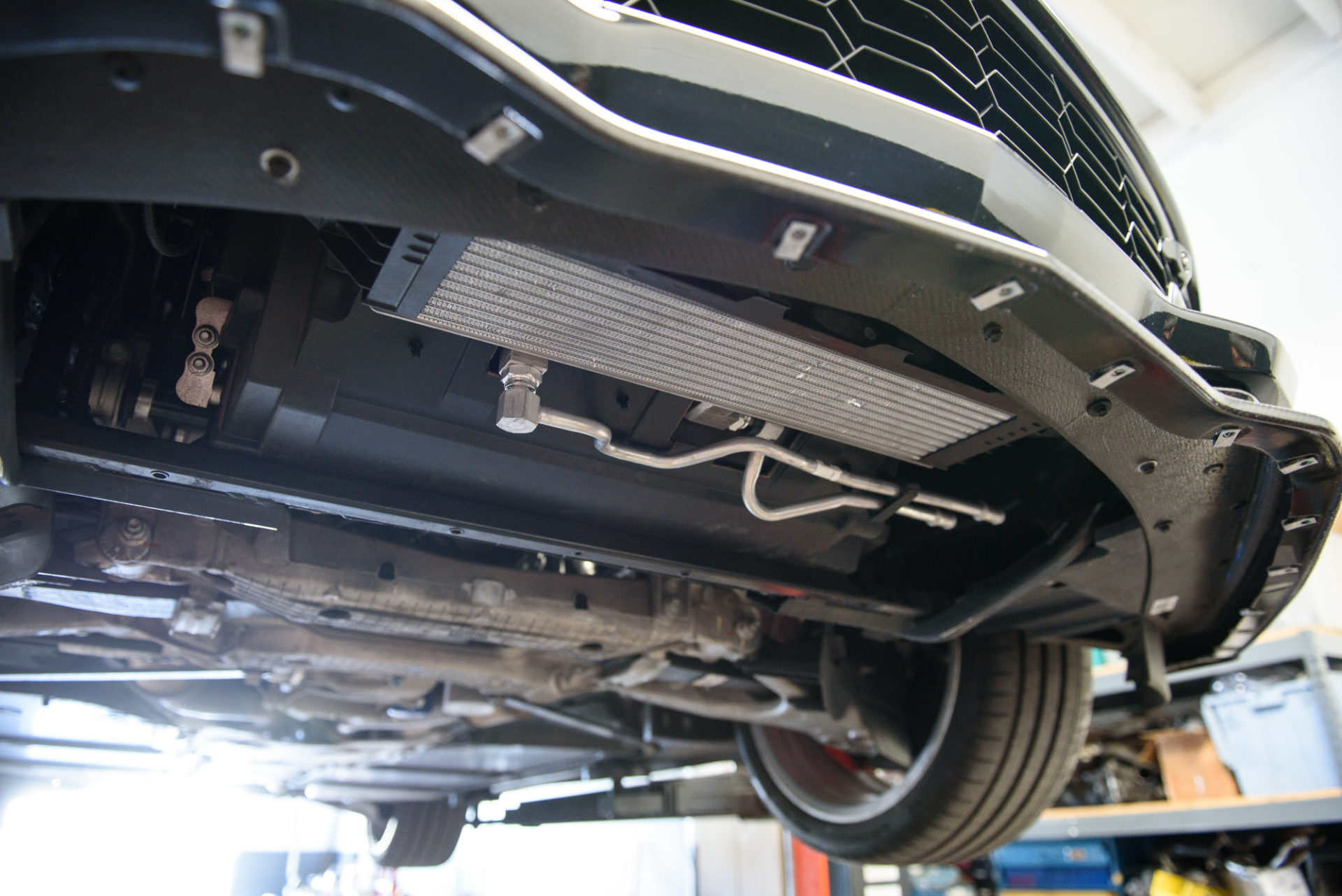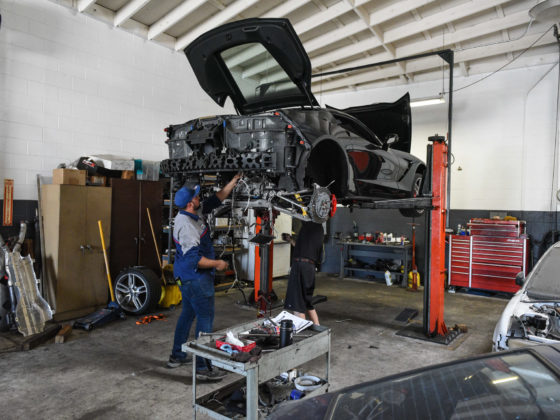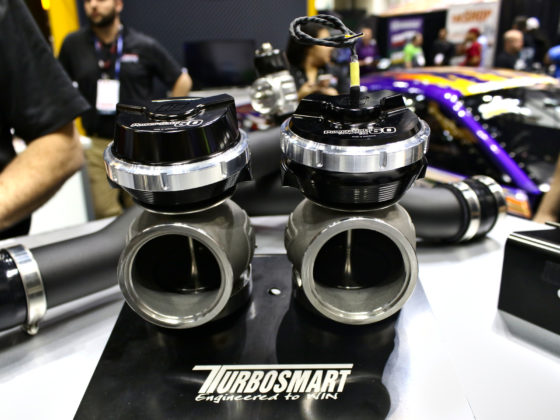
Project Corvette Stingray C7 Z51: Keepin’ it Cool(er)
Corvettes have always been notorious for overheating on the track. The Z51 shod from the factory with additional cooling capacity is much better in this respect, but it can still run hot under the worst conditions. For this reason, Chevrolet has come out with an auxiliary radiator kit to supplement the engine cooling on the C7. Since we plan to drive our car on the track, you can bet we are going to install this!
On the LT1 engine, the oil is cooled by a large oil to water heat exchanger. Water is taken from the engine’s water jacket, circulated through the heat exchanger and then routed to the radiator where it is cooled with the rest of the coolant. Heat from the engine oil is thus introduced into the engine’s cooling system.
The Chevrolet Performance system reduces or eliminates this additional source of heat from entering the cooling system by adding an additional water to air heat exchanger between the oil cooler and the radiator.
Read more about our Project C7 Corvette Here!



We are somewhat curious why GM took this route to increase cooling capacity rather than simply spec’ing a larger, higher capacity radiator, which might have been a simpler way to do it.
However, the way Chevy has done this, specifically cooling the water from the oil cooler- is pretty neat. We think that judging from the size of the water to air heat exchanger, it can actually make the coolant cooler than it was going into the engine oil cooler.




